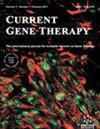氧化磷酸化相关亚型的特征及卵巢癌预后特征的构建
IF 3.3
4区 医学
Q2 GENETICS & HEREDITY
引用次数: 0
摘要
背景:卵巢癌的死亡率很高。氧化磷酸化(OXPHOS)是癌症中一种活跃的代谢途径;然而,它在卵巢癌中的作用仍不明确。因此,本研究旨在确定卵巢癌中 OXPHOS 相关基因的预后价值和免疫景观。研究方法我们从癌症基因组图谱(The Cancer Genome Atlas,TCGA)和基因表达总库(Gene Expression Omnibus,GEO)数据库中获取了与卵巢癌相关的公开数据集,并从GeneCards数据库和文献中识别了OXPHOS相关基因。通过 Cox 回归分析,确定了预后的 OXPHOS 相关基因,并根据患者的 OXPHOS 评分和临床病理特征绘制了预后提名图。采用功能富集分析确定相关过程。结果:确定了 12 个基因特征,将卵巢癌患者分为高危和低危两组。OXPHOS得分高组的免疫表观评分(IPS)高于OXPHOS得分低组,这表明他们对免疫检查点抑制剂的反应更好。功能富集分析显示,在一系列免疫过程中,OXPHOS相关基因的数量相当丰富。所构建的预后提名图的 1 年、2 年和 3 年校准曲线显示,卵巢癌患者的预期生存概率与观察到的生存概率非常一致。结论我们构建了一个包含 12 个 OXPHOS 相关基因的预后模型,并证明了它对卵巢癌患者具有很强的预测价值。研究发现 OXPHOS 与免疫浸润和免疫治疗反应密切相关,这可能有助于改善卵巢癌的个体化治疗和预后评估。本文章由计算机程序翻译,如有差异,请以英文原文为准。
Characteristics of Oxidative Phosphorylation-Related Subtypes and Construction of a Prognostic Signature in Ovarian Cancer
Background: Ovarian cancer is associated with a high mortality rate. Oxidative Phosphorylation (OXPHOS) is an active metabolic pathway in cancer; nevertheless, its role in ovarian cancer continues to be ambiguous. Therefore, the objective of this study was to identify the prognostic value of OXPHOS-related genes and the immune landscape in ovarian cancer. Methods: We obtained public ovarian cancer-related datasets from The Cancer Genome Atlas (TCGA) and Gene Expression Omnibus (GEO) databases and recognized OXPHOS-related genes from the GeneCards database and literature. Cox regression analyses were conducted to identify prognostic OXPHOS-related genes and develop a prognostic nomogram based on the OXPHOS score and clinicopathological features of patients. Functional enrichment analyses were employed to identify related processes. Results: A 12-gene signature was identified to classify the ovarian cancer patients into high- and low-risk groups. The Immunophenoscore (IPS) was higher in the OXPHOS score-high group than in the OXPHOS score-low group, suggesting a better response to immune checkpoint inhibitors. Functional enrichment analyses unveiled that OXPHOS-related genes were considerably abundant in a series of immune processes. The calibration curves of the constructed prognostic nomograms at 1, 2, and 3 years exhibited strong concordance between the anticipated and observed survival probabilities of ovarian cancer patients. Conclusion: We have constructed a prognostic model containing 12 OXPHOS-related genes and demonstrated its strong predictive value in ovarian cancer patients. OXPHOS has been found to be closely linked to immune infiltration and the reaction to immunotherapy, which may contribute to improving individualized treatment and prognostic evaluation in ovarian cancer.
求助全文
通过发布文献求助,成功后即可免费获取论文全文。
去求助
来源期刊

Current gene therapy
医学-遗传学
CiteScore
6.70
自引率
2.80%
发文量
46
期刊介绍:
Current Gene Therapy is a bi-monthly peer-reviewed journal aimed at academic and industrial scientists with an interest in major topics concerning basic research and clinical applications of gene and cell therapy of diseases. Cell therapy manuscripts can also include application in diseases when cells have been genetically modified. Current Gene Therapy publishes full-length/mini reviews and original research on the latest developments in gene transfer and gene expression analysis, vector development, cellular genetic engineering, animal models and human clinical applications of gene and cell therapy for the treatment of diseases.
Current Gene Therapy publishes reviews and original research containing experimental data on gene and cell therapy. The journal also includes manuscripts on technological advances, ethical and regulatory considerations of gene and cell therapy. Reviews should provide the reader with a comprehensive assessment of any area of experimental biology applied to molecular medicine that is not only of significance within a particular field of gene therapy and cell therapy but also of interest to investigators in other fields. Authors are encouraged to provide their own assessment and vision for future advances. Reviews are also welcome on late breaking discoveries on which substantial literature has not yet been amassed. Such reviews provide a forum for sharply focused topics of recent experimental investigations in gene therapy primarily to make these results accessible to both clinical and basic researchers. Manuscripts containing experimental data should be original data, not previously published.
 求助内容:
求助内容: 应助结果提醒方式:
应助结果提醒方式:


